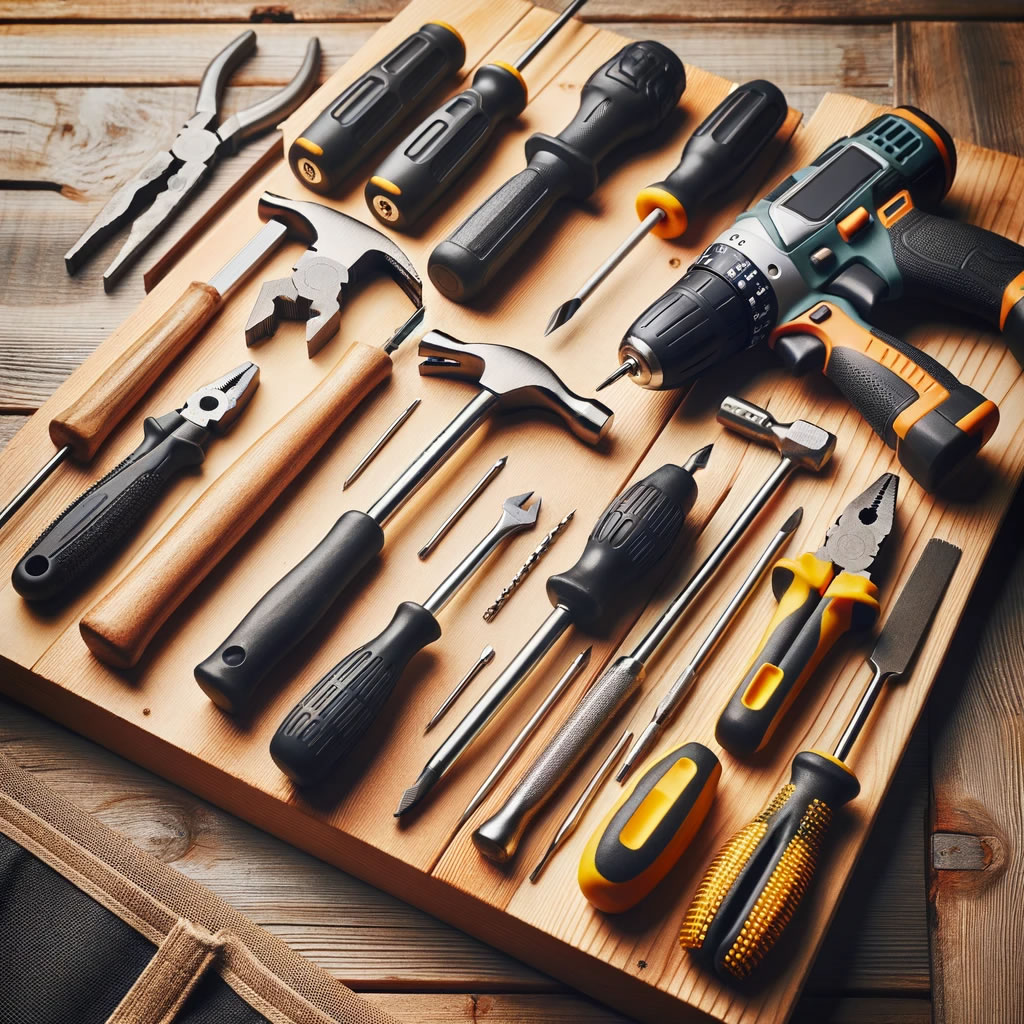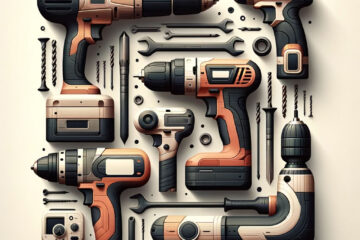Embarking on DIY Home Repairs can be a rewarding experience, offering both personal satisfaction and the potential to save money.
For many homeowners, the idea of fixing, updating, or maintaining aspects of their home is not just about the cost savings; it’s also about the sense of accomplishment that comes from completing a task with their own hands.
DIY home repairs range from simple fixes to more complex projects, making them accessible to people of varying skill levels.
Table of Contents

Empowerment and Education
One of the key benefits of DIY home repairs is the opportunity to learn and acquire new skills.
Whether it’s fixing a leaky faucet or patching a hole in the wall, each task provides valuable experience and knowledge.
Customization and Control
DIY home repairs allow homeowners to have complete control over the materials, designs, and finishes used, enabling a level of customization that might not always be possible when hiring professionals.
Community and Resources
The DIY community is vast and supportive, with numerous online resources, tutorials, and forums where individuals can share advice and experiences.
This community aspect can be incredibly helpful, especially for beginners.
Starting with DIY home repairs can be as simple as identifying a need within your home and taking the first step to address it.
With the right tools and resources, even novices can successfully tackle various home repair projects.
Essential Tools for DIY Home Repairs

For anyone embarking on DIY home repairs, having the right tools is crucial.
A well-equipped toolbox is the foundation of any successful DIY project.
Here are some essential tools that should be part of your DIY toolkit:
Basic Hand Tools
Include a hammer, screwdrivers (both flathead and Phillips), pliers, an adjustable wrench, and a set of Allen keys. These tools are versatile and can be used for a wide range of basic repairs.
Measuring and Leveling Tools
A tape measure, a level, and a square are essential for ensuring accuracy in your DIY projects. Accurate measurements and alignments are crucial for the success of any repair or installation.
Power Tools
A cordless drill is a must-have in your toolkit. It not only drills holes but can also be used as a powerful screwdriver. A circular saw or jigsaw is also useful for projects involving cutting.
Safety Gear
Safety should always be a priority. Include safety glasses, gloves, and ear protection in your toolkit to protect yourself during repairs.
Miscellaneous Supplies
Keep a stock of nails, screws, wall plugs, and other fasteners. Also, include a utility knife, a flashlight, and some duct tape for quick fixes.
Having these tools at your disposal will prepare you for a wide range of DIY home repairs, making the process smoother and more efficient.
Top DIY Home Repairs for Beginners
For those new to DIY home repairs, starting with simple and straightforward projects is key.
These beginner-friendly repairs not only build your confidence but also equip you with basic skills that are applicable to more complex tasks.
Inspired by the Family Handyman article, here are some top DIY home repairs that beginners can tackle:
Fixing a Leaky Faucet
This common issue is often caused by a worn-out washer or O-ring, which can be easily replaced. It’s a great first project that teaches you about basic plumbing.
Unclogging Drains
Before calling a plumber, try unclogging drains yourself using a plunger or a plumber’s snake. It’s a simple task that can save you money and time.
Patching Holes in Walls
Small holes in drywall or plaster can be fixed with spackling compound or patching plaster. This repair teaches you about wall materials and basic finishing techniques.
Replacing a Toilet Flapper
A constantly running toilet is usually due to a faulty flapper. Replacing it is a simple task that involves minimal tools and provides insight into basic toilet mechanics.
Installing a New Showerhead
Upgrading your showerhead can be a straightforward task. It involves unscrewing the old showerhead and replacing it with a new one, a simple yet satisfying repair.
These DIY home repairs are perfect for beginners and can be accomplished with basic tools and a little bit of patience and learning.
DIY Home Repairs vs. Professional Help
Understanding the distinction between DIY home repairs that are safe and feasible to do yourself and those that require professional expertise is crucial.
As suggested by Real Simple, here’s a guide to help you decide when to roll up your sleeves and when to call in the pros:
When to DIY
Simple Plumbing
Tasks like unclogging drains, fixing a leaky faucet, or replacing a showerhead are generally safe for DIY.
Basic Electrical Work
Replacing light fixtures, switches, or outlets can be done yourself if you follow safety protocols.
Cosmetic Updates
Painting, installing shelving, or replacing hardware are ideal DIY projects.
When to Call a Professional:
Major Electrical Work
For any work that involves the main electrical panel or rewiring, it’s safer to hire a licensed electrician.
Structural Changes
Removing walls, altering the foundation, or any work that affects the structural integrity of your home should be done by professionals.
Complex Plumbing
Major plumbing work, like relocating pipes or installing a new bathtub, requires a professional plumber.
Key Consideration
Assess your skills, the tools required, and the potential risks involved. If a project feels overwhelming or dangerous, it’s wise to seek professional help.
Balancing DIY home repairs with professional assistance ensures that your home improvements are done safely and effectively.
Cost-Effective DIY Home Repairs
Engaging in DIY home repairs can be a cost-effective way to maintain and improve your home.
Drawing from the LendNation article, here are some budget-friendly DIY home repairs that not only save money but also enhance your living space:
Sealing Drafts
Identify and seal drafts around doors and windows using weather stripping or caulk. This simple repair can improve energy efficiency and reduce utility bills.
Basic Landscaping
Basic landscaping, such as mowing the lawn, trimming bushes, and maintaining garden beds, can significantly boost your home’s curb appeal without the need for professional services.
Repairing Leaky Faucets
Fixing leaky faucets can prevent water wastage and save on water bills. Often, this repair involves simply replacing a washer or tightening a connection.
Touching Up Paint
Refresh your walls with a new coat of paint. This is one of the most cost-effective ways to rejuvenate your home’s appearance.
Fixing Squeaky Doors and Floors
Lubricating hinges or tightening screws can easily fix squeaky doors. For squeaky floors, securing loose floorboards can be a simple yet effective solution.
These DIY home repairs are not only wallet-friendly but also add value to your home.
They are perfect for homeowners who want to keep their homes in good condition while managing their budgets.
FAQ for “Simple DIY Home Repairs You Can Do Yourself”
What are some essential tools I need for DIY home repairs?
Start with a basic toolkit including a hammer, screwdrivers, pliers, an adjustable wrench, a tape measure, a level, a cordless drill, and safety gear like gloves and goggles.
Can I handle basic plumbing repairs myself?
Yes, simple plumbing tasks like fixing a leaky faucet, unclogging drains, or replacing a showerhead are manageable with basic tools and some research.
Are there any electrical repairs I can safely do on my own?
You can safely undertake minor electrical repairs such as replacing light fixtures, switches, or outlets. However, always turn off the power at the circuit breaker before starting any electrical work.
How do I decide between a DIY repair and hiring a professional?
Assess the complexity of the repair, your skill level, and the potential risks.
For major electrical work, structural changes, or complex plumbing, it’s best to hire a professional.
What are some cost-effective DIY home repairs?
Sealing drafts, basic landscaping, repairing leaky faucets, touching up paint, and fixing squeaky doors and floors are all cost-effective repairs that can significantly improve your home.
How can I learn to do DIY home repairs?
There are numerous resources available, including online tutorials, DIY home repair books, and community workshops. Start with small projects to build your confidence and skills.



